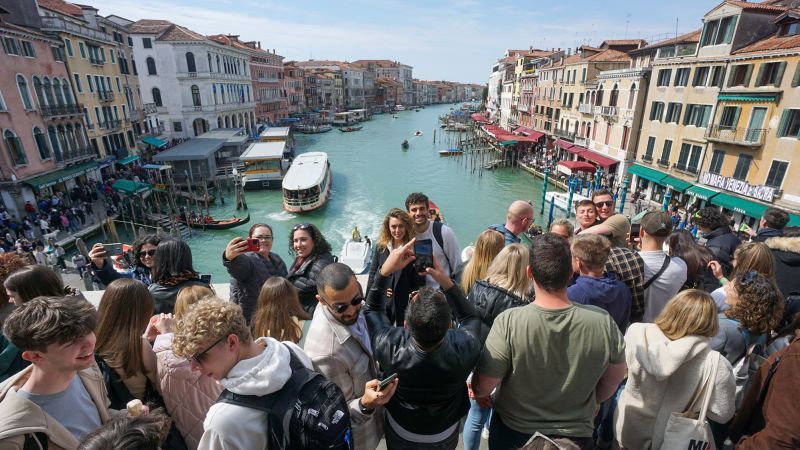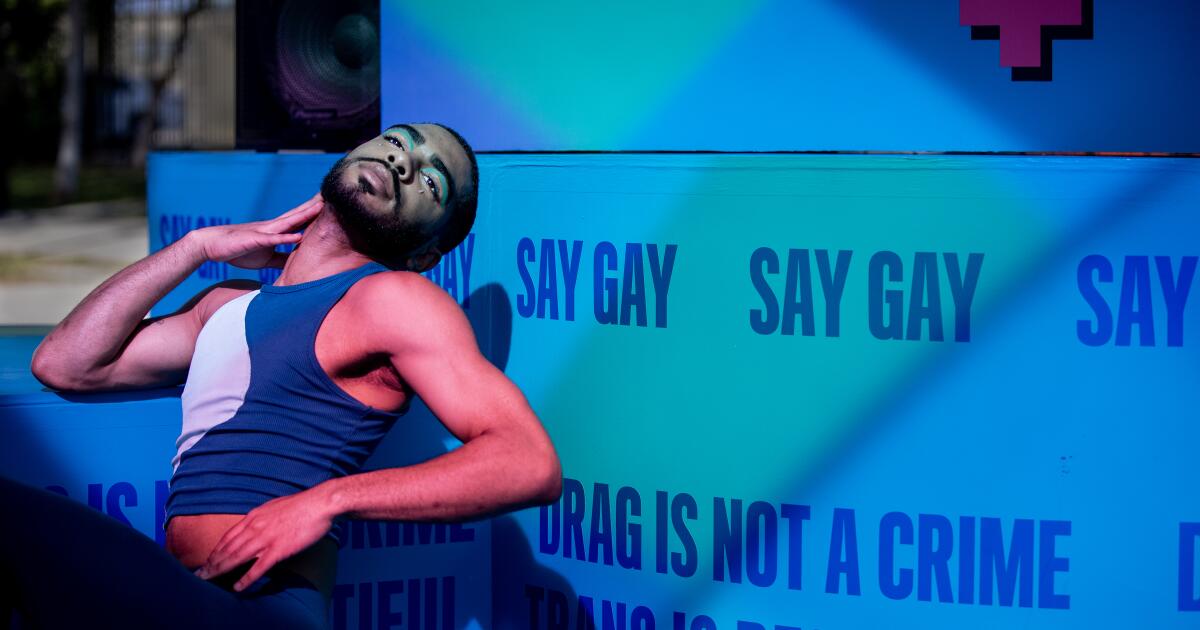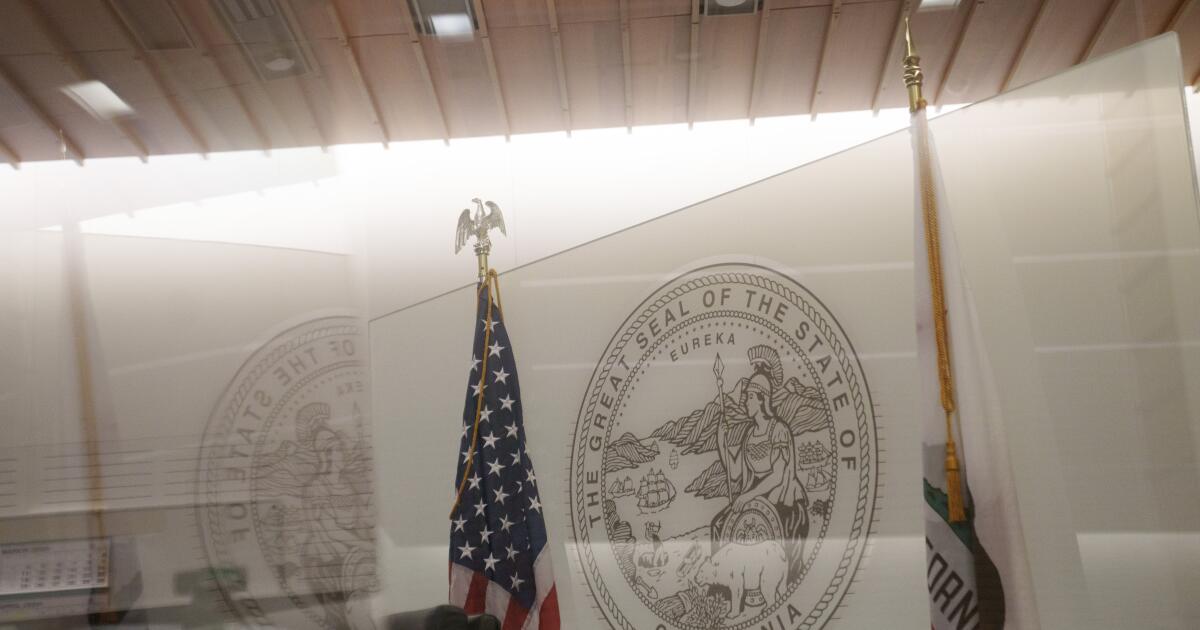Editor's note: Sign up to CNN Travel Unlocking Italy Newsletter for insider information on Italy's most beloved destinations and lesser-known regions to plan your best trip. Plus, we'll get you in the mood before you go with movie suggestions, reading lists, and Stanley Tucci recipes.
cnn
—
The time has finally come: it's time for Venice to charge admission.
Starting April 25, the floating city will implement the much-discussed entrance fee for day-trippers.
The fee has been under discussion for years. Although it is expected to expand its scope, for the 2024 pilot it will only apply on certain days during the peak season, between April 25 and July 14.
But it's not just hikers who need to worry. Although people staying overnight in the city will not have to pay the fee, if they will be in town on those dates, they will still need to register for a waiver.
On January 16, the city council presented its online platform to process reservations and exemptions. So how do you register to pay the fee if you're only coming for one day? And how do you register an exemption if you are staying overnight? We reserved some of the first tickets when they were released today. This is what you should know.
The access fee will expire in 29 days between April 25 and July 14. The dates are as follows:
• April 25-30
• May 1-5
• May 11 and 12
• May 18 and 19
• May 25 and 26
• June 8 and 9
• June 15 and 16
• June 22 and 23
• June 29 and 30
• July 6 and 7
• July 13 and 14
Fee is charged for daytime visits between 8.30am and 4pm. By 2024, it is a flat rate of 5 euros ($5.45) per person per day.
By 2024, the city has waived the fee for travelers to most of the lagoon islands, including the Murano and Burano visitor centers, as well as the Lido, where the city's beaches are located. However, most visitors to Murano and Burano will have to pay the fee anyway, as most arrive by taking vaporetto ferries from the city center.
People traveling through Piazzale Roma (the bus terminal), Tronchetto or Stazione Marittima (where small cruise ships still dock) will be exempt, as long as they do not cross into the “Old City”.
Venice City Hall has launched an online platform that allows you to pay in advance if you visit on the day, here.
Click pay fee; You will then be taken to a home page managed by Venezia Unica, the city's official tourism site.
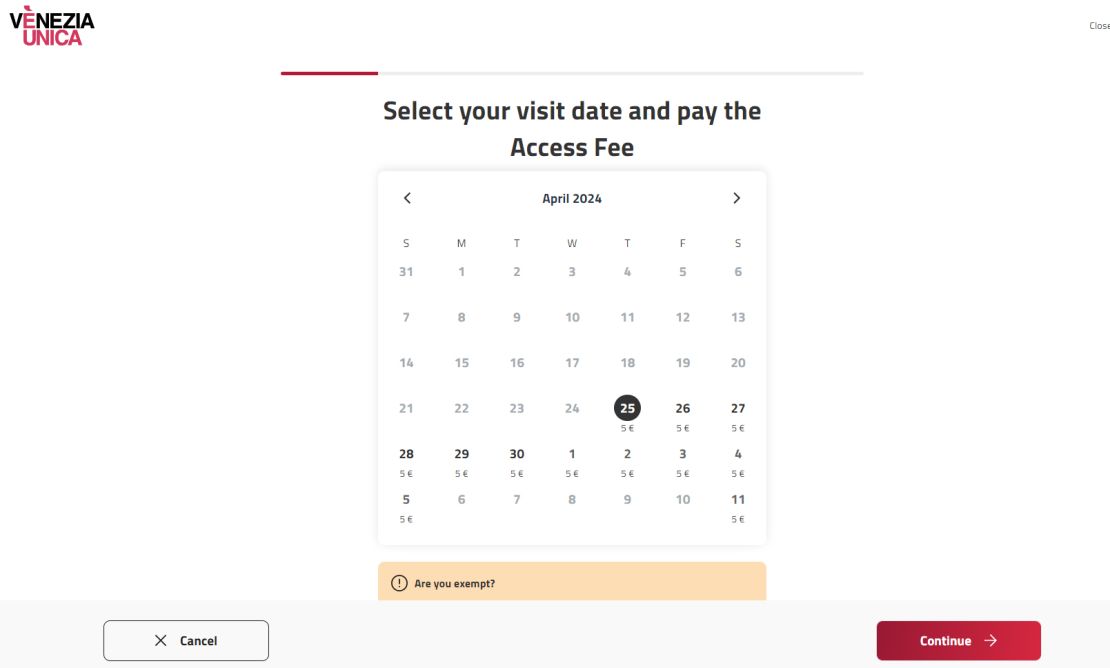
Select your date and then the number of people, including children under 14 (non-paying, see below).
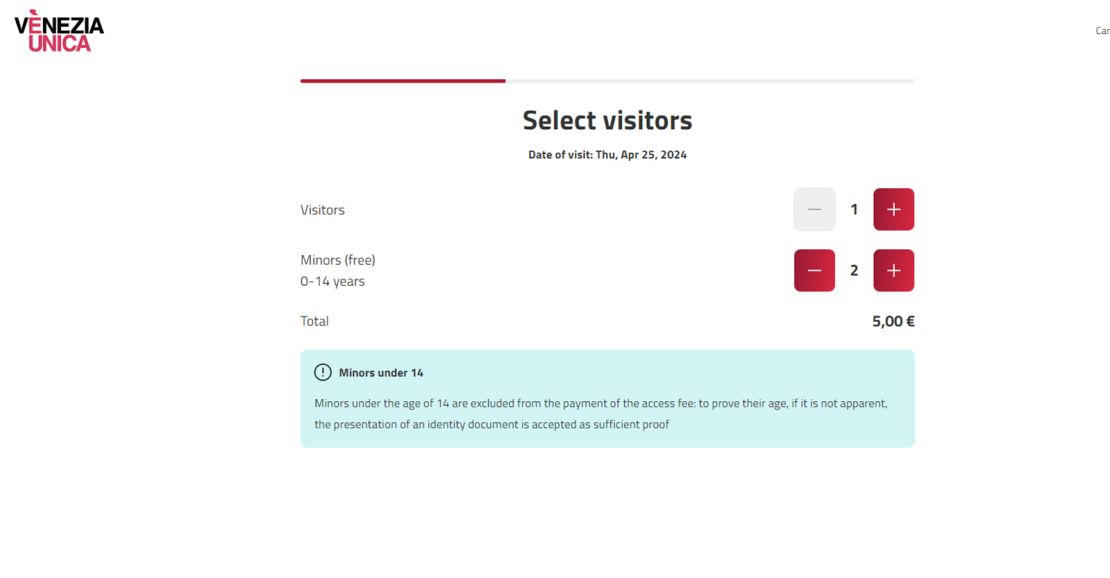
Enter the names of adult travelers; in other words, those who must pay the fee. You will then have 10 minutes to pay.
Fully paid? An A4 size document will be emailed to you with your initials, your booking code, the days you have booked and a QR code. You can print it or show it on your phone when asked.
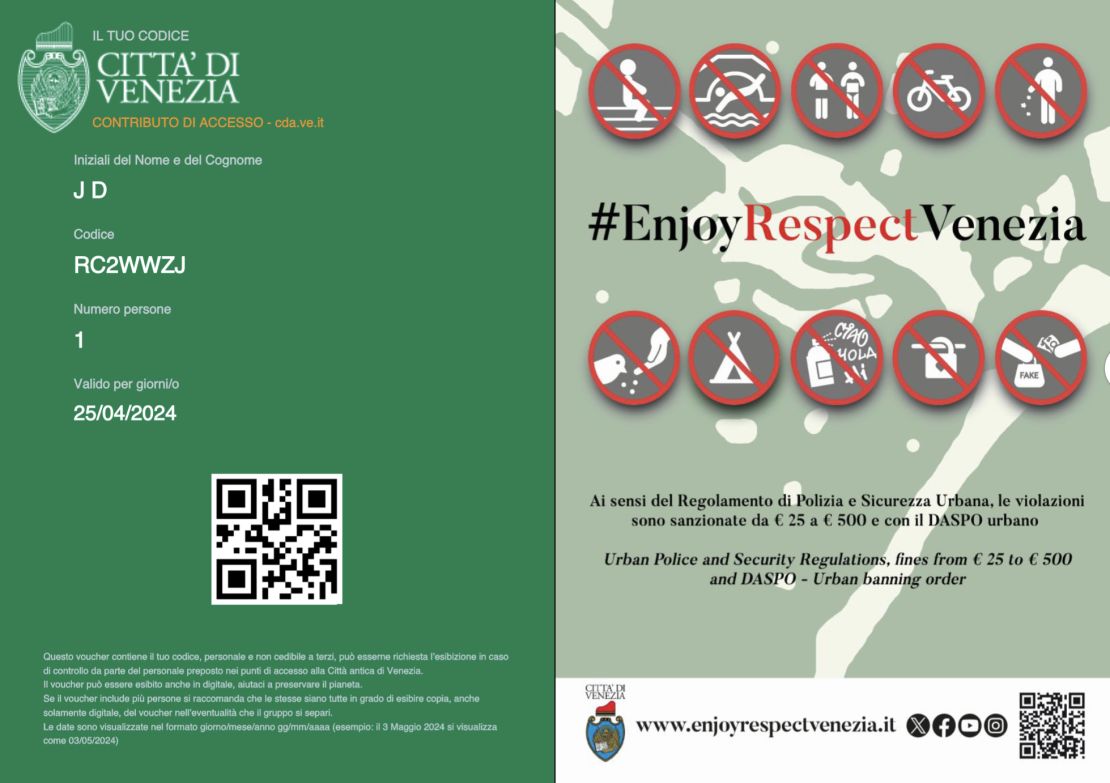
The “ticket” also advertises various city passes that can be purchased and notes fines that must be paid for prohibited behavior, such as picnicking and canal swimming. Please note that it is written in Italian, although the request can be made in English. Don't worry: the only details you need to verify are your initials, your group number, and the date (written in European style, as in day-month-year).
The number of people does not include children: we requested one adult and two children under 14 years old, and our ticket showed one person.
Everything too complicated? In “exceptional” circumstances you can also pay on arrival at two entry points: Piazzale Roma, the bus terminal and the Venezia Santa Lucia train station. However, expect long lines.
If you wish to cancel, you can do so until 11:59 p.m. the day before your booked visit.
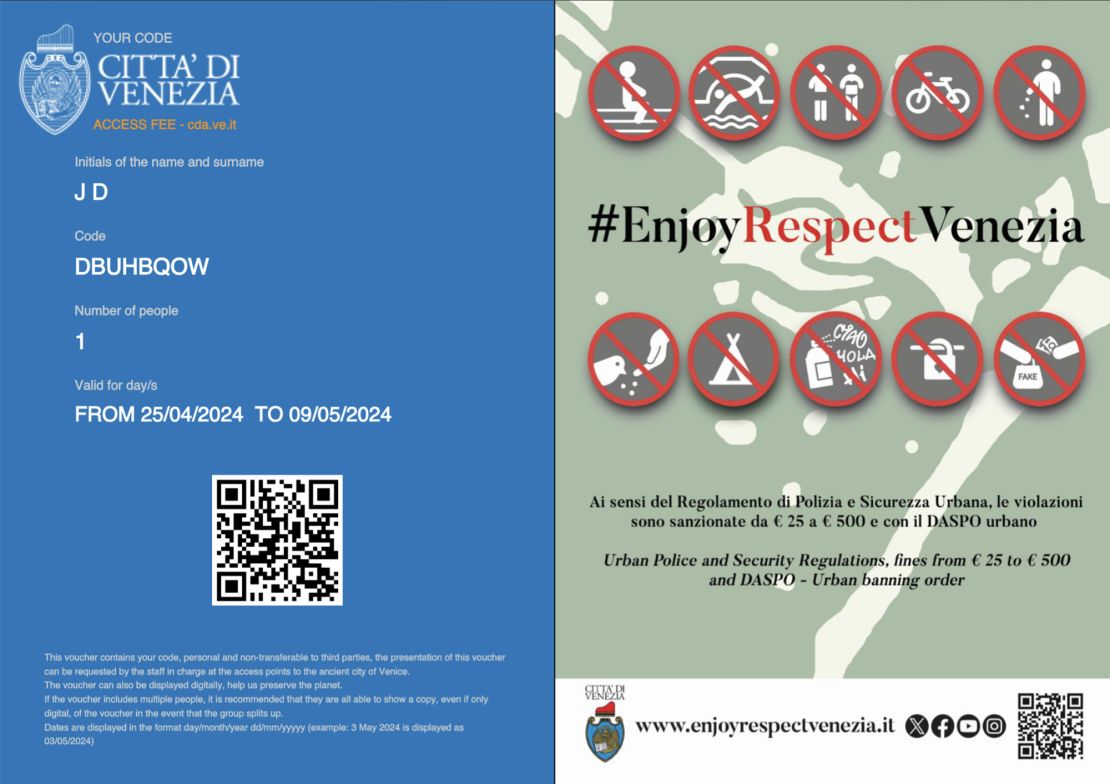
If you are spending the night in the city with a confirmed reservation, you will not have to pay the charge, since you will be paying an overnight tax.
However, you will still need to officially apply for an exemption and receive a QR code to show if you stop. The exemption can be requested on the same website; See instructions below.
Other exemptions exist, but they are unlikely to be relevant for tourists. These include people who own property in the city (and pay property taxes) and students and travelers who work in Venice. They will have to register on the platform to obtain a long-term QR code valid throughout the year.
All other exemptions must obtain daily QR codes. These include:
• People who visit the city for business or short-term studies.
• Tourists spending the night in the municipality of Venice, which includes Mestre on the mainland.
• People visiting the residents of what is known as the “Old Town,” the historic center of Venice.
• Children under 14 years of age.
• Visitors with “certified disabilities” and their caregivers.
• People visiting to attend a sporting event (such as the Venice Marathon) or to receive medical treatment.
There are other categories that are only really relevant to Italians, such as members of the armed forces visiting the country for work.
However, remember that anyone applying for an exemption (except residents and people born in Venice) must register for a QR code. That is how.
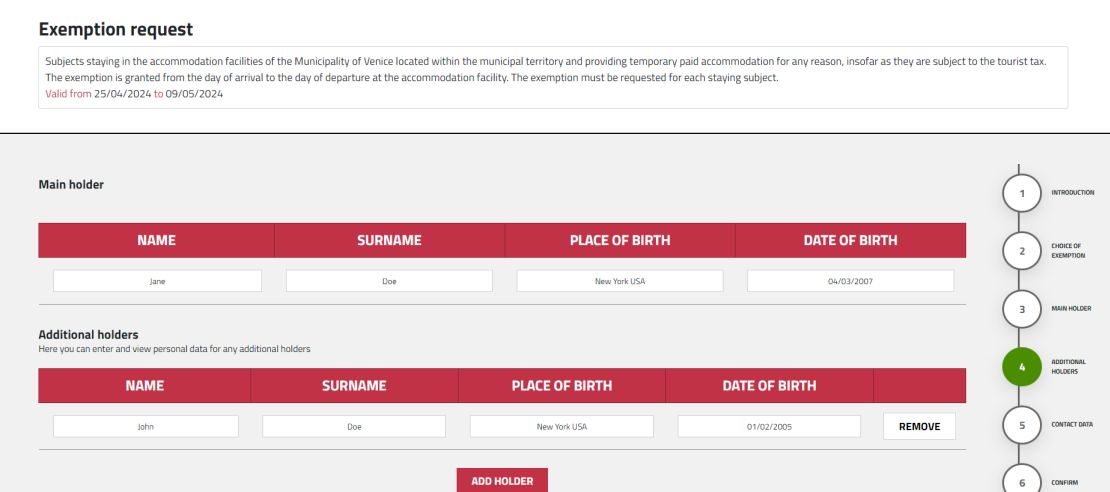
On the same platform, select “exemptions”. It will then take you to this page.
If you're a tourist, you're probably applying because you're staying overnight. Therefore, you must select “I am a guest of an accommodation located in the municipality of Venice”.
You will be covered from the day of arrival to the day of departure; In other words, you can arrive before check-in and stay after check-out.
You will then be able to enter the dates of your stay; You do not need to apply for a day pass.
Next, you will enter your name, date and place of birth, “residence” (this means home address) plus email and phone number.
Then enter the name of the place where you are staying. If it doesn't appear, you can enter it manually.
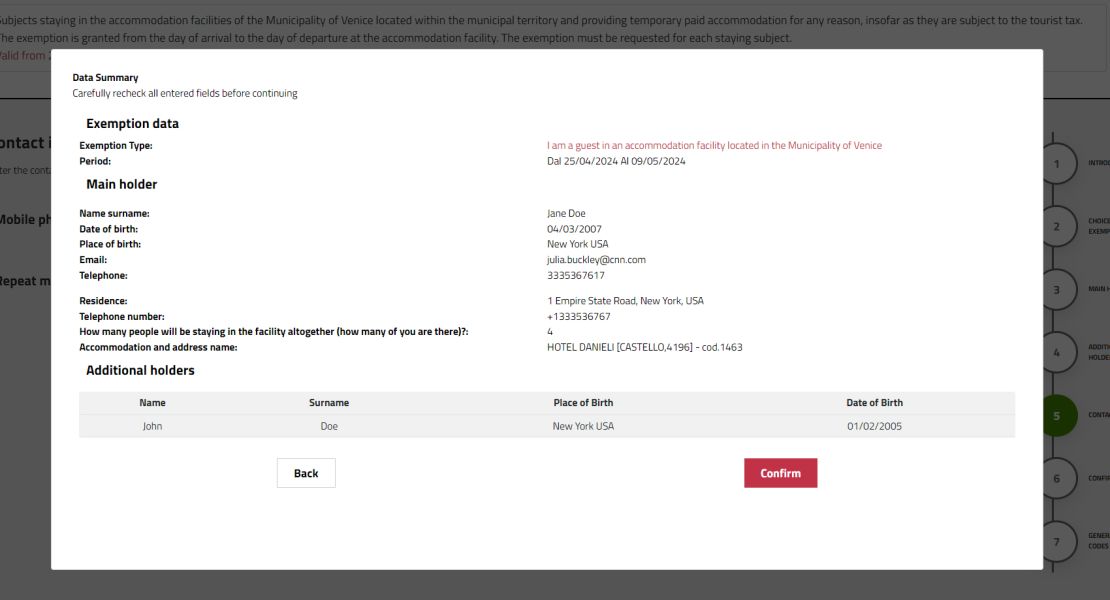
On the next page, you can enter the names of other people in your group; You do not need to make a separate request for each one.
This is where it gets more complicated. You will enter your phone number. Make sure it's correct and you can make international calls, because the next page will give you just 60 seconds to call a local number in Venice, which will verify your phone number.

The call will not connect, but will confirm your number in the system, which will take you to the next page. Finally your QR codes! You can download them directly or receive them by email.
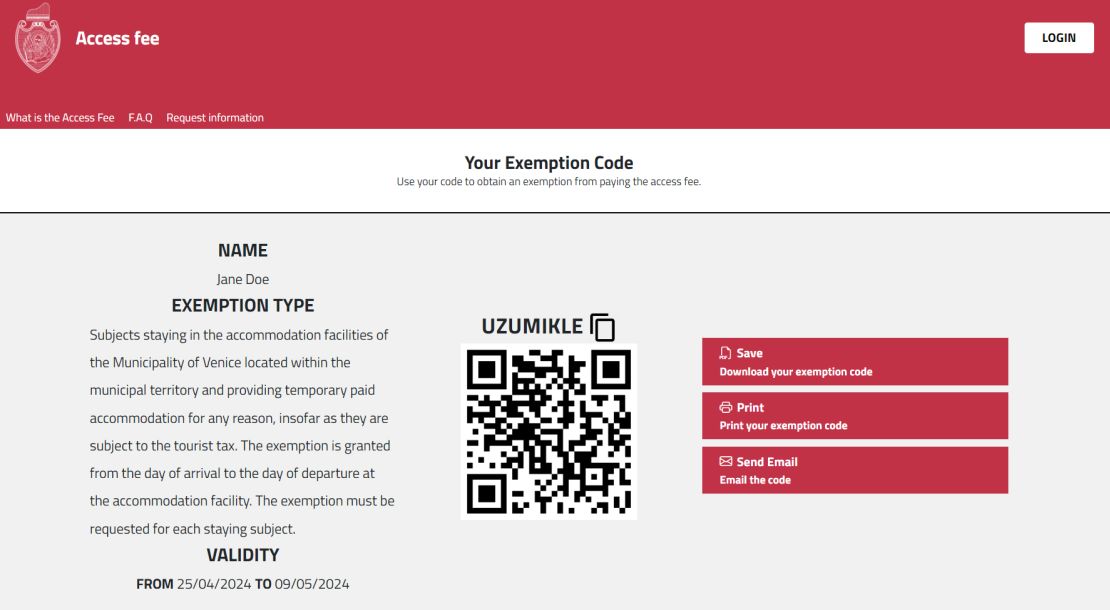
There will be seven main access and ticket control points, including the airport, train and bus stations, the port of Fusina and the promenades of Fondado Nove and Riva degli Schiavoni, where many ships dock. A council spokesperson confirmed these will not be the only checkpoints, but he could not say where the others will be.
Anyone caught evading payments, whether by not having a QR code or inventing an exemption, will be fined. Penalties will range between 50 and 300 euros ($54 and $327), plus an additional 10 euros to cover entry. Culprits can also be cited under the Penal Code for making false statements.
The city is overwhelmed by tourists: around 30 million arrive each year, dwarfing the less than 50,000 residents. Much of those numbers are hikers who leave little money in the local economy, but a lot of trash and chaos.
The idea of charging a nominal fee has less to do with discouraging people from visiting, and more to do with raising awareness about peak season and busy days. Few people will give up the idea of visiting Venice for a five-dollar fee, but they can be convinced to wait for a less busy (and free) day to take the pressure off the city. In the coming years, the pressure to change the dates could become a little stronger, as the plan is to implement a sliding scale of fees, depending on how busy the city is. However, the maximum fee talked about is 10 euros, but it is still not enough to deter anyone from visiting.
The city was also under pressure from UNESCO, which had threatened to add Venice to its list of World Heritage in Danger in 2023. The motion to do so was abandoned after the city announced plans for the hiker tax.
A happy side effect could be curbing the growing number of illegal Airbnbs in the city. Since anyone spending the night will have to indicate where they are staying, people who make illicit rentals will have to legally register (and pay taxes on that income).
It will work? Venice is the first major city in the world to try this, so let's see.

